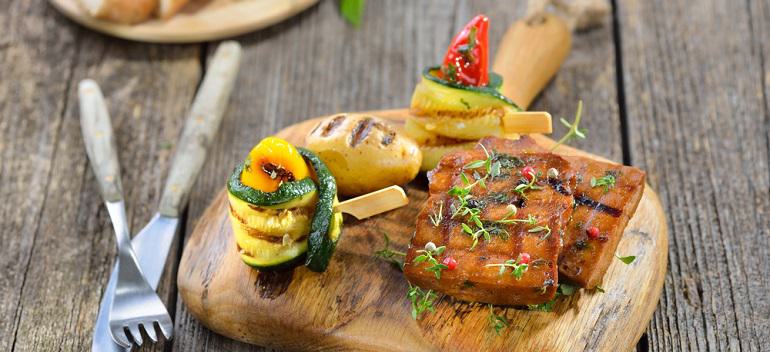


 What is seitan, exactly? A popular meat substitute used primarily in vegetarian and vegan meals, seitan is often referred to by many different names, including wheat meat, gluten meat, vital wheat gluten, and gluten. It's made by combining two ingredientswheat gluten and waterand is a soy free alternative to many of the meat-free products available for individuals following a plant-based diet.
But what is the difference between seitan vs tempeh? When cooked, seitan takes on a meaty texture that is both dense and chewy. Because its texture is similar to that of meat, most people prefer it to tofu or tempeh when making a genuinely meaty dish. Additionally, seitan absorbs flavor exceptionally well, making it easy to include in various cuisines ranging from sweet and savory to spicy.
Luckily, making this versatile ingredient at home is easy. Creating seitan requires you to knead vital wheat gluten and water until it forms into a firm ball or loaf. Wheat flour or additional ingredients can be added to improve the texture; however, they're not always needed.
After the dough has been formed into a ball, it is rinsed and boiled to wash away the starches. Seitan can be used to create everything from vegan chicken strips to plant-based taco meat and is a favorite amongst vegetarians and meat-eaters alike.
What is seitan, exactly? A popular meat substitute used primarily in vegetarian and vegan meals, seitan is often referred to by many different names, including wheat meat, gluten meat, vital wheat gluten, and gluten. It's made by combining two ingredientswheat gluten and waterand is a soy free alternative to many of the meat-free products available for individuals following a plant-based diet.
But what is the difference between seitan vs tempeh? When cooked, seitan takes on a meaty texture that is both dense and chewy. Because its texture is similar to that of meat, most people prefer it to tofu or tempeh when making a genuinely meaty dish. Additionally, seitan absorbs flavor exceptionally well, making it easy to include in various cuisines ranging from sweet and savory to spicy.
Luckily, making this versatile ingredient at home is easy. Creating seitan requires you to knead vital wheat gluten and water until it forms into a firm ball or loaf. Wheat flour or additional ingredients can be added to improve the texture; however, they're not always needed.
After the dough has been formed into a ball, it is rinsed and boiled to wash away the starches. Seitan can be used to create everything from vegan chicken strips to plant-based taco meat and is a favorite amongst vegetarians and meat-eaters alike.
 While seitan can be made in several different ways, here's an overview of how to make seitan and the ingredients commonly used in this dish.
While seitan can be made in several different ways, here's an overview of how to make seitan and the ingredients commonly used in this dish.
 Making basic seitan in the comfort of your kitchen is easy. Keep scrolling for a step-by-step guide to make seitan from scratch.
Making basic seitan in the comfort of your kitchen is easy. Keep scrolling for a step-by-step guide to make seitan from scratch.
 Now that you know how to make homemade seitan, it's time to decide how you'd like to cook it. Seitan can be baked, steamed, or boiled, which will all result in different textures. Whether you are looking to make vegan seitan patties, a steak, sausage, or a stir fry, there are many dishes you can make once you've created the seitan dough. Before determining how you'd like to cook this vegan meat substitute, we recommend finding a recipe to add it to first. Knowing what you'll be combining the seitan with will help you decide what method to use.
Now that you know how to make homemade seitan, it's time to decide how you'd like to cook it. Seitan can be baked, steamed, or boiled, which will all result in different textures. Whether you are looking to make vegan seitan patties, a steak, sausage, or a stir fry, there are many dishes you can make once you've created the seitan dough. Before determining how you'd like to cook this vegan meat substitute, we recommend finding a recipe to add it to first. Knowing what you'll be combining the seitan with will help you decide what method to use.